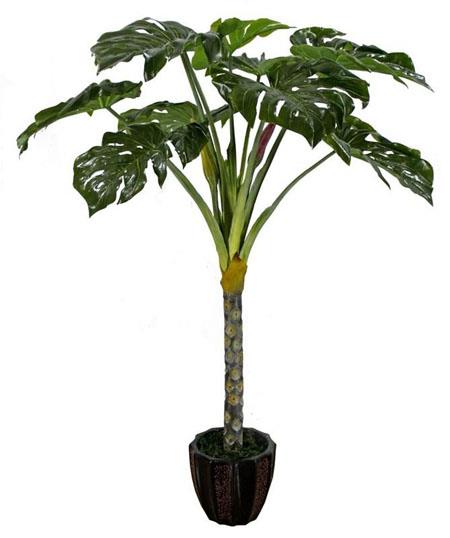The difference between spring feather and spring taro
Last Update :2024.06.22
Article Catalog
Differences in basic characteristics
Differences in growing environment
Spring feathers and spring taro, these two plants not only have similar names, but also have very similar appearances. It is often difficult for people to distinguish them. Today I will introduce to you the differences between spring feathers and spring taro!

Differences in basic characteristics
Differences in basic characteristics
The stems of Spring Feather are lignified, upright and quite short. There are usually many roots at the bottom of the stem. The petiole is thin and long, reaching 1 meter in length. The leaves grow in clusters, usually at the end of the stem, and are particularly large, like a palm with deep feathery clefts, very dark green and shiny. The plants of Chunyu are tall, usually reaching more than 1.5 meters.
The stem of spring taro is very thick and very short. The leaves grow in other directions from the upper part of the stem and grow very tightly and neatly. The leaves of spring taro are like an egg-shaped heart, and the color is bright and shiny. Its petiole is thin and long, and the length of the petiole can reach between 801 cm and 100 cm. Its leaves are huge, up to 1.5 meters in length, dark green in color, the length of the whole leaf can reach 60 cm, and the width can reach 40 cm. Spring taro plants can reach more than 1.8 meters.

Growth Differences in environment
Chunyu likes an environment with high temperature and humid air. It does not have strict requirements on light. It cannot be frozen but can withstand a dark growing space. As long as the indoor light is not too weak, Chunyu will Feathers can grow. Spring feathers have higher temperature requirements. It is best to keep the temperature above 5°C in winter, and preferably above 10°C to prevent spring feathers from being damaged by freezing. Spring feathers can start to grow when the temperature reaches 10°C. The most suitable temperature for the growth of spring feathers is 20℃~30℃, but you should pay attention to shielding from strong light; spring feathers are not strict on the soil, but they grow best in sandy soil with good drainage and rich in humus. Well, potted spring feathers can generally be grown in nutrient soil mixed with peat and fine rocks. Potted spring feathers need to be placed in a semi-shady place. Especially in summer, be sure to cover them from strong light and avoid direct sunlight. For spring feathers during the growth period, pay attention to keeping the soil moist and never make it too dry.

Spring Taro does not have high environmental requirements and can grow in a slightly warmer and humid environment. At the same time, it can tolerate dark environments. Spring taro is particularly cold-resistant, but the general suitable temperature for growth is 18-25°C. It can withstand low temperatures of 2°C in winter, but it is best to keep the temperature above 5°C. In addition, spring taro has no strict soil requirements and can grow in general sandy soil.
Differences in growing environment
- END -
How to grow potted bougainvillea and precautions

Lighting: Ensuring sufficient light during breeding can increase the number of flo...
Six stages of flower growth

1. Germination stage: The first thing flowers go through during their growth is th...